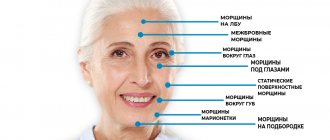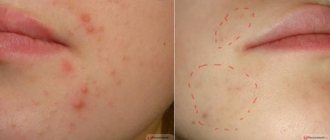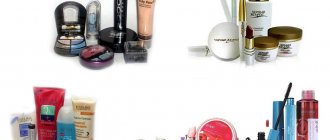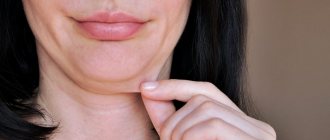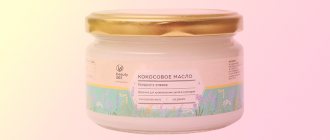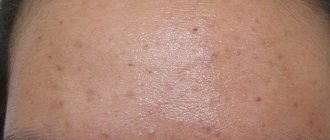- What are scars?
- What types of scars are there?
- How is laser scar removal surgery performed?
- What are the benefits of laser scar removal?
- Are there any contraindications?
- How is the rehabilitation going?
- Are there any complications?
- Laser scar removal before and after photos
- Prices
- How to make an appointment?
Absolut Med Center for Aesthetic Cosmetology offers laser scar removal. In our work we use the German device Dermablate MCL-30. Removing scar tissue using an erbium laser is a great way to get rid of unsightly marks from injuries and surgeries on your body.
What types of scars are there?
- Hypotrophic scars. They are located below the skin level and form unsightly pits. Mostly they remain after acne and chicken pox. To remove acne scars, you usually need more than one procedure.
- Normotrophic scars are located at the skin level, their surface differs from the skin in its uneven surface and color. They can be removed in one go.
- Hypertrophic scars. These are scars that often form after a deep cut. They protrude above the general level of the skin. It can be removed with laser polishing several times.
- Keloid scars. Outwardly they look like hypertrophic ones. Typically, such a scar is wider than its base. It may hurt, and the person experiences unpleasant itching. They appear in people whose bodies are prone to forming such scars even after minor cuts.
Types of scars
To choose the optimal treatment method, the doctor must decide on the type of scar on the forehead. Experts distinguish several types of scars, which differ from each other in their internal structure and appearance. Clinical characteristics of the main types of scars:
- Normotrophic. Usually located flush with the skin. The scar itself looks pale. It does not cause any unpleasant sensations in terms of pain, burning or itching. The main discomfort it brings is a cosmetic defect.
- Atrophic. It often remains after a serious inflammatory process. Surgical treatment of papillomatous formations and warts can also lead to the formation of this type of scar. Appearance: sunken (like a dent in the skin), pale pink and flabby.
- Hypertrophic and keloid. Almost always rises above the surface of the skin. Very prone to growing in any direction. They itch and can cause discomfort. Red or blue. Quite dense to the touch.
If doctors spent more time on plastic sutures, the scars on open areas of the body would not be so noticeable and depressing.
How is laser scar removal surgery performed?
The essence of laser scar removal is that scar tissue is removed layer by layer. Using an erbium laser, the epidermis is evaporated. At the same time, the depth of impact is strictly controlled. As a result, blood circulation improves at the scar site, lymphatic drainage improves and the formation of healthy skin is stimulated.
Depending on the amount of scar tissue, the doctor decides what type of anesthesia to use: local or general. In normal cases, local anesthesia is used.
If the scar is small, the person does not feel pain during the procedure, but only a slight burning sensation.
Scar treatment takes place over several sessions. Usually these are two or three procedures, with an interval of three to four weeks or a month. If the scars are quite large, it may take up to 10 months.
Scarification
SERVICE | PRICE |
SCARRINGexamination, consultation, sterilization, procedure, rest | 4500 RUBLES PER HOUR OF WORKFROM 90 MINUTES |
There are several types of scarification: – abrasive (performed using a scalpel) – chemical (performed using caustic chemicals) – burn (performed using cauterization with a hot object)
We perform scarring only with a scalpel, since this method gives the most clear results. Let's figure out how all this happens.
Burn scarification is the fastest (and therefore least painful) type of scarification, but after a while, burn scars become very deformed and blurry, so the use of burn scarification as an element decorating the body is subject to deep doubts. It is more correct to divide scarring according to the desired result: – voluminous scars – deep scars – flat scars.
Preparing a sketch
This is the most important, complex and responsible part of the procedure. Actually, this is what you pay for. If you turned to a specialist who was negligent in this part of the procedure, you will probably end up with a crappy scar. Sketch preparation involves choosing a design that will look good on a body part. Or vice versa, a part of the body on which the drawing will fit well. The master must take into account the tension lines of the skin, because... they determine in which direction the scar can spread.
Next, you need to remove all unnecessary details - unlike a tattoo, you cannot make many lines on a small piece of skin. This activity will simply lead to the formation of porridge on your skin. In addition, if you plan to cut off areas of skin (skin removal), you need to make sure that these areas do not spread too widely, and this is determined, among other things, by the sketch. Well, accordingly, remote sections should not overload the remaining lines. Otherwise, you simply won’t be able to see anything other than these spots. The master should explain all this to you during the planning of the sketch.
Of course, you need to take into account all the nuances of the place chosen for scarring - its mobility, its ability to scar, its susceptibility to household mechanical influences (specifics of work, etc.) - all this will one way or another affect the final result.
Process
Well, everything is simple here. In any case, first the entire pattern, about 1 mm deep, is cut out with a scalpel. Next, if skin needs to be removed, sections of skin are cut out. The use of anesthesia is at the client's request. Without anesthesia it is quite painful. But then your part of the work begins, which will determine the final pattern on your body.
Healing
Either way, once the scar is cut out, the body will begin the process of growing new skin at the cut sites. At first it will be dark pink or purple. Then gradually this area of skin will begin to lose this color and turn white. This process takes from a month to a year (usually). The final discoloration of the scar means the end of the regeneration process in the skin, that is, the scar will no longer change its appearance. However, this does not always happen.
Sometimes, when several factors coincide (usually a tendency to keloids and “incorrect” care), the scar can continue regenerative processes inside for a long time. That is, the skin has already seemed to have healed, and the body continues to grow new fibroblasts inside. This causes the scar to become dark pink and voluminous. This is the so-called hypertrophic scar. If it becomes too sensitive and painful, it is already a keloid. This happens sometimes. The difficulty in treating keloids is that they do not stop growing and it is difficult to say at what size they will stop and begin to turn white (fading). And immediately after the procedure, it all depends on what you want to get.
1. Flat (normal) scar
The most common type of scarring. To create ordinary scars, we recommend “wet” care - healing of wet wounds. The essence of the method is to prevent the appearance of a blood-lymph crust on the surface of the wound. Immediately after completing the work, you need to cover the area with thin, clean plastic film. Wear the film for several days until new skin appears in the wounds. Every few hours you need to change the film and gently rinse the wound with an antiseptic using blotting movements, without tugging at the edges of the cuts.
The advantage of the method over conventional “dry” healing is that the crust blurs the boundaries of the scar, destroying small details. It also increases the healing time, since the crust itself is an additional traumatic factor. Once new skin appears, you simply need to gently handle the scar until it heals completely. That is, do not rub, do not tug, do not scratch too much, and so on. And also minimize other mechanical and chemical influences. As a result, we will end up with a pattern that is lighter in color than normal skin.
2. Volumetric (keloid) scar
Immediately after completing the work, you need to cover the area with thin, clean plastic film. At home, you need to remove the film and let the scar dry. Naturally, you need to make sure that dirt, infection and other joys of life do not get on the open wound. As a rule, the wound becomes covered with a crust within a few hours. If you need to go somewhere or go to bed, naturally, the wound needs to be sealed with film. It is not recommended to wrap it with a bandage, as it will simply stick to the wound and tearing it off will be painful and traumatic. You can use pads or baby diapers to absorb blood. If something still sticks to the wound, you can use soaking in hydrogen peroxide to remove it. It dissolves the blood, making it easier and safer to separate the stuck dressing material.
Then, after a stable crust has formed, you need to leave it alone until it falls off on its own. There should be new, intact, pink skin underneath. And then for 1-2 months, every day after taking a shower or bath, you need to rub the scar with a rough towel for 10-15 minutes. (you should rub it hard, until it hurts, but you should not damage the skin) And in the end - voila! – you will get a beautiful (possibly) keloid that has grown in volume. Of course, this will take more than one month - you will have to be patient.
3. Deep scar
Immediately after completing the work, you need to cauterize the resulting pattern with a weak acid. To do this, we buy citric acid in the store (used in cooking), dilute it with warm water to form a viscous paste. Apply the paste to the wound over the entire area of the removed skin, rub it into the wound. DO NOT wash the acid off the wound. It covers it, preventing it from forming a crust and growing outward, i.e. the acid keeps the scar at its depth. Repeat the procedure 2 times a day until complete healing, each time after a shower. If a crust appears, you can try soaking it in the shower and carefully remove it, being careful not to damage the skin. The less damage to the skin, the better the result.
Nuances
In any case, even if you strictly follow these recommendations, you need to remember that each person has different abilities for regeneration, different skin, in different places it has different thickness and mobility. Therefore, it is almost impossible to predict exactly how the scar will turn out. However, there is a possibility that it will work out. 50 to 50. Experienced professionals have 80 to 20. In addition, scars always look more impressive on dark skin. If you are dark-skinned and tanned, then the scars on you will be noticeable. Well, if you are a pale Satan, then you can only hope for voluminous scars. Good luck with bringing your scars to life!
Sign up or contact the master
What are the benefits of laser scar removal?
- The operation is very effective, as it makes it possible to completely remove the formation.
- During the procedure there is no contact with the wound, which means there is no danger of infectious tissue infection
- Scars of different sizes can be removed
- It is possible to provide a targeted effect without affecting healthy tissue
- The operation is bloodless (what is its main difference from surgical removal of a scar)
- Since the effect of the erbium laser is very gentle, there is no hyperpigmentation after the procedure.
- According to patient reviews, there is no serious pain during the operation.
Treatment methods
Currently, quite a lot of different techniques have been developed to get rid of scars on the body. The choice of an adequate treatment method is determined by a specialist doctor after conducting a detailed clinical examination of the pathological area that needs to be eliminated. The scar removal technique should not only be effective, but also safe for the patient, and not leave visible marks on the skin. Depending on the type of scar, appropriate treatment methods are used:
- Normotrophic - cryomassage, electrophoresis with lidase and collagenase, phonophoresis with contratubex, microcurrent therapy, laser therapy, vacuum massage, peelings with fruit acids, therapeutic and surgical dermabrasion.
- Atrophic - cryomassage, phonophoresis with contratubex, laser therapy, microcurrent therapy, vacuum massage, deep peeling, therapeutic and surgical dermabrasion.
- Hypertrophic - cryodestruction, electrophoresis with lidase, collagenase and glucocorticosteroids, phonophoresis with contratubex and steroid ointments, laser phoresis, microcurrent therapy, mesotherapy, therapeutic and surgical dermabrasion.
- Keloid - cryodestruction, electrophoresis with enzymes, phonophoresis with Contratubeks and steroid ointments, laser therapy, microcurrent therapy, mesotherapy, laser dermabrasion, surgical excision of the scar.
Cryomassage
One of the oldest, proven and accessible treatment methods in dermatology and cosmetology is cryomassage. The pathological focus is exposed to liquid nitrogen. Cryomassage provides the following effects:
- Smoothes the surface of the scar.
- Increases its elasticity.
- Accelerate color normalization.
The cosmetic procedure is performed using a special applicator. The duration of cryomassage depends on the size of the scar and can be approximately 10–25 minutes. The therapeutic course includes up to 12 sessions. They are carried out 2-3 times a week. Up to three courses are allowed with a break of several weeks. It has been clinically established that conservative treatment is ineffective for old scars. Similar procedures are recommended for scars that are less than six months old.
Taking into account the type and characteristics of the scar on the forehead (deep, depressed, convex, voluminous, etc.), the specialist selects a treatment method that will help effectively remove the defect.
Cryodestruction
Cryodestruction is successfully used to treat hypertrophic and keloid scars. Liquid nitrogen is preferred as a thermal agent. In approximately 70% of cases, this procedure gives a positive effect, which is realized due to the destruction of tissue under the influence of very low temperatures. However, post-procedure wound care is necessary.
However, one of the main disadvantages of this cosmetic procedure is the long healing process. As a rule, inflammation after cryodestruction goes away within 3 weeks. At this time, it is recommended to apply a bandage to the forehead to prevent the wound from becoming infected. It is worth noting that there is some probability of relapse of the formation of hypertrophied and keloid scars with a prolonged healing process. The procedure is contraindicated in the presence of acute infectious pathology.
Electrophoresis
Electrophoresis with enzymes (lidase, collagenase) is considered quite appropriate for the treatment of young scars, when scar tissue is just forming. First, it is recommended to start with lidase, then switch to collagenase. Each enzyme has its own characteristics of action on scar tissue. In most cases, 10–12 procedures of electrophoresis with lidase are prescribed per course. In total, up to three courses are required. Be sure to take a break between courses, which should last at least 7 days. Then electrophoresis with collagenase is carried out according to a similar scheme.
Phonophoresis
Due to phonophoresis, gel and ointment dosage forms are administered. With its help, it is also possible to introduce the above enzymes and glucocorticosteroids. Today, the most popular gel is Contratubeks, which has the following pharmacological properties:
- Fibirinolytic (absorbable).
- Anti-inflammatory.
- Keratolytic (softens and dissolves the stratum corneum).
It is recommended to use it for 2-3 months. The drug must be rubbed lightly into the scar area up to three times a day. To increase efficiency, Contratubex is administered using phonophoresis. The therapeutic course consists of 12 procedures. In total, you should take 3-4 courses, with a break between them of 14-20 days. Ultrasound is characterized by a softening effect on tissue, which makes it possible for the drug to penetrate deeply and increase the effectiveness of therapy.
Using ultrasound, steroid ointments are also administered. Most often, 1% Hydrocortisone ointment is prescribed, which prevents the pathological growth of scar tissue and normalizes skin color within 7-14 days. Mainly used for the treatment of normotrophic scars.
Modern surgical and conservative treatment methods make it possible not only to remove a sunken or convex scar on the forehead from a dissection, but also visible marks from stitches.
Mesotherapy
Today, mesotherapy is actively used in cosmetology and dermatology. It can be considered as an alternative to electrophoresis and phonophoresis. The essence of the method is that lidase and collagenase are introduced by microinjection directly into the scar area. Many experts believe that mesotherapy is more effective than electrophoresis and phonophoresis. In addition to lidase and collagenase, biologically active substances, vitamins, steroids and drugs that improve microcirculation can be administered.
Some patients have a severe reaction to the administration of enzymes or other substances, manifested by swelling, redness and tenderness. In such cases, it is recommended to take Ascorutin, which stabilizes the permeability of blood vessels for 30 days. In order not to be confused with an allergic reaction, it is necessary to remember to carry out all the appropriate allergy tests before the procedure.
Peelings
A cosmetic procedure such as chemical peeling can effectively remove the top layer of the epidermis. The method is effective not only against scars on the forehead or other parts of the body, but also marks from rough stitches. A dermatocosmetologist has several types of peeling in his arsenal:
- Surface. Fruit acids and trichloroacetic acid are used.
- Median. Typically, trichloroacetic acid is used in a higher concentration or combined with glycolic acid.
- Deep. Phenol is used to cleanse the face.
Chemical peeling helps to exfoliate the top layer of scar tissue. At the same time, the relief of the treated area is leveled. However, there is a negative point, which is that chemical peeling cannot be carried out frequently and repeatedly. As the skin is injured, its sensitivity increases and the risk of allergic reactions increases.
Therapeutic dermabrasion
Mechanical cosmetic procedures that help even out the relief of the skin and get rid of an unaesthetic scar above the forehead include therapeutic dermabrasion. Indicated for the treatment of normotrophic, atrophic and hypertrophic scars. They may resort to various types of therapeutic dermabrasion:
- Struyny.
- Ultrasonic.
- Tokovoy and others.
This is a non-surgical and non-invasive technique that ensures safe skin resurfacing. The risk of developing any complications is quite minimal. Today, controlled microdermabrasion is an excellent alternative to laser resurfacing and chemical facial cleansing. There are practically no contraindications. Side effects are extremely rare. The procedure is quick, painless and does not require local anesthesia.
The relief and age of the scar determine the duration of therapy using therapeutic dermabrasion. On average, it is recommended to undergo up to 10 sessions. There is a break of about a week between procedures. As soon as the crusts and scales fall off, it is advisable to conduct a second session. It should be noted that controlled microderambrasion does not leave pathological marks on the skin.
If the wound is sutured by a qualified surgeon using a plastic suture, then traces of the defect on the skin will be minimal.
Operative dermabrasion
When they want to reduce treatment time, preference is given to surgical dermabrasion. Among all types of this procedure, an erbium laser is best suited for getting rid of normotrophic scars. It provides thin layer-by-layer removal of scar tissue, smoothing the skin texture. Some features of surgical dermabrasion:
- After the procedure, tissue restoration takes about 10 days.
- After 1–3 months, the surface of the skin that has been polished acquires a normal color.
- To normalize the color of the scar, you can use a cold compress with boric acid, hydrocortisone ointment, etc.
- Patients who have undergone surgical dermabrasion should use photoprotective creams for 6-8 weeks.
Therapeutic and surgical dermabrasion significantly improves the condition of the skin in the scar area, which can easily be camouflaged with cosmetic makeup products. It is worth noting that the earlier treatment is started, the greater the chances of a successful result. The most optimal time frame for such procedures is up to 6 months.
External medicines
Various medicinal and cosmetic products can be used to treat scars. Mederma gel is often prescribed. The active substances are cepalin and allantoin, which have the following pharmacological properties:
- Relieves inflammation.
- Kill pathogenic microflora.
- Accelerate recovery processes.
- Stimulates collagen production.
- Moisturizes the skin.
- Promotes exfoliation of the upper layer of the epidermis.
Mederma gel is indicated for the treatment of atrophic and hypotrophic scars. The scar area must be treated with this external remedy up to three times a day. The duration of the therapeutic course can last up to six months.
To correct scars, you can use Fermencol gel. This drug begins to be used 20-30 days after the wound has healed. The gel can be combined with other treatment methods. To increase efficiency, it is administered using electrophoresis and phonophoresis. The therapeutic course is up to a month. Actively prevents the growth of scar tissue and helps reduce the size of the scar.
Kelofibraza cream also helps to cope with post-traumatic scars. High efficiency, availability and safety of use are noted. Even prolonged use of the cream, as a rule, does not cause side effects. In extremely rare cases, itching, burning and redness of the skin may occur in the area where the drug is applied. The only contraindication for use is hypersensitivity to the components of the drug. Combination with other drugs for external use is allowed.
Many people try to remove scars with various folk remedies, but often such measures do not lead to anything good.
How is the rehabilitation going?
After surgery, the skin recovers within five days. During this postoperative period, care must be taken not to damage the site where the procedure was performed. You should not play sports, visit the sauna, swimming pool or bathhouse.
The skin at the site of exposure must be treated with special antiseptic solutions and lubricated with ointments and creams to treat burns.
It is important to wait for the resulting crust to peel off on its own.
After the procedure, you should avoid direct sunlight on the scar for one and a half months. In cases where several procedures are required to completely remove a scar, it is very important that the body has time to recover within three weeks.
What is the purpose of therapy?
The main task is to completely eliminate the defect or significantly reduce its manifestations. This is achieved by softening scar tissue and reducing pigmentation at the site of scar formation.
Absorbing, whitening, restoring skin elasticity methods are used, as well as activating regeneration at the site of the defect.
Laser scar removal before and after photos
Features of scar healing
The face remains open more often than other parts of the body and is exposed to the greatest influence of the environment. The skin here is thin and delicate, and the forehead is one of the areas of the face where the lower layer, subcutaneous fatty tissue, is almost absent. If the dermis on the forehead is damaged, increased attention should be paid to treatment.
Specific features of wound healing in this area:
- vessels are located superficially - risk of increased bleeding;
- if the facial muscles are damaged and the edges of the wound diverge, healing slows down;
- Long-term swelling often occurs.
Wound healing on the face occurs faster than on other parts of the body due to the skin being full of nerve endings, increased blood supply and increased regeneration.
